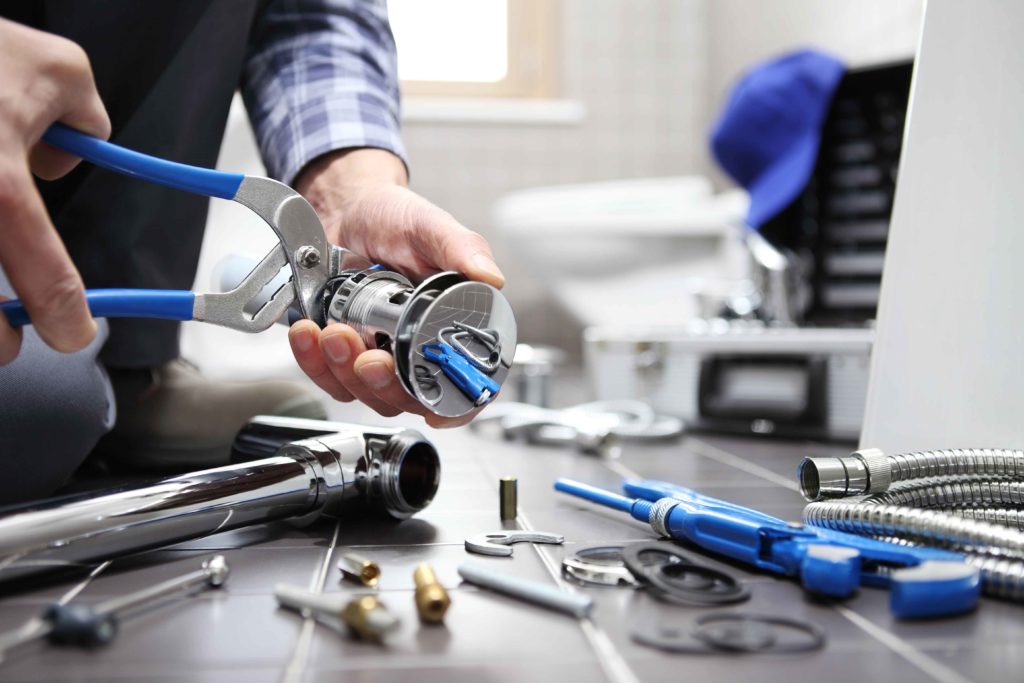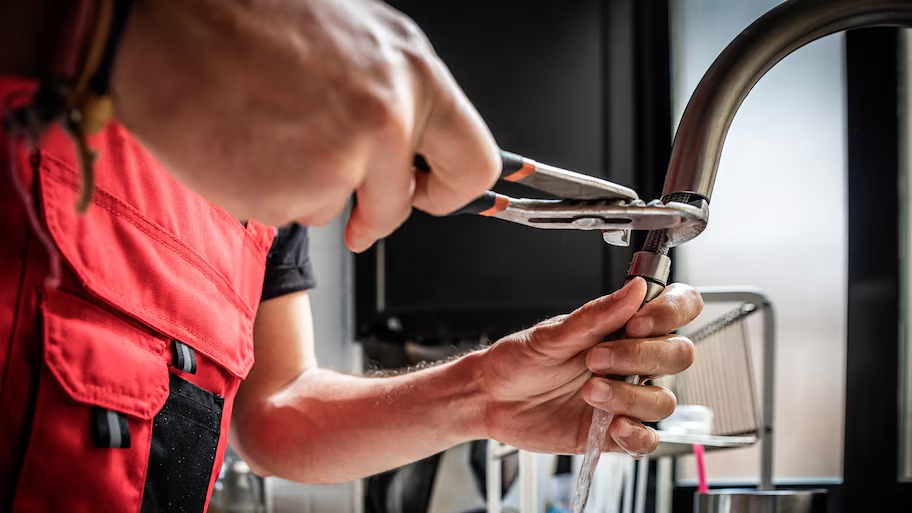Any individual may have their own unique conception about How to Fix a Dripping or Leaky Faucet .

Trickling taps may appear like a small trouble, however their effect goes beyond just the annoyance of the noise. From wasting water to sustaining unneeded monetary costs and health threats, neglecting a dripping tap can cause various consequences. In this short article, we'll explore why it's vital to resolve this typical family problem immediately and successfully.
Waste of Water
Ecological Effect
Dripping faucets contribute considerably to water wastage. According to the Environmental Protection Agency (EPA), a solitary tap leaking at one drip per second can throw away greater than 3,000 gallons of water annually. This not only pressures water sources but additionally impacts ecological communities and wildlife dependent on them.
Financial Prices
Increased Water Costs
Past the ecological impact, trickling faucets can pump up water expenses significantly. The gathered waste over time converts right into greater utility expenses, which could have been avoided with prompt fixings.
Possible Home Damage
In addition, long term leaking can lead to harm to fixtures and surfaces bordering the faucet. Water buildup can cause discoloration, rust, and even architectural problems if left neglected, leading to added repair work prices.
Health and wellness Problems
Mold and Mold Development
The continuous visibility of wetness from a trickling faucet produces an excellent environment for mold and mildew development. These fungis not just compromise indoor air high quality but also position health and wellness dangers, particularly for people with respiratory system problems or allergies.
Waterborne Diseases
Stationary water in dripping taps can end up being a breeding ground for microorganisms and various other pathogens, raising the danger of waterborne diseases. Pollutants such as Legionella bacteria prosper in stagnant water, potentially leading to severe illnesses when consumed or inhaled.
Do it yourself vs. Professional Repair service
Pros and Cons of Do It Yourself Fixing
While some may attempt to deal with a dripping faucet themselves, DIY repair services feature their own set of difficulties. Without correct knowledge and tools, DIY attempts can intensify the concern or cause insufficient fixings, lengthening the problem.
Advantages of Working With an Expert Plumber
Employing a specialist plumber guarantees that the underlying source of the trickling tap is attended to successfully. Plumbers possess the know-how and tools to detect and fix tap problems effectively, saving time and decreasing the threat of additional damage.
Step-by-Step Guide to Fixing a Dripping Tap
Devices Required
Prior to trying to repair a dripping tap, gather the needed tools, consisting of an adjustable wrench, screwdrivers, substitute parts (such as washing machines or cartridges), and plumber's tape.
Typical Faucet Issues and Their Solutions
Determine the type of tap and the specific problem causing the drip. Typical problems consist of worn-out washers, rusty valve seats, or malfunctioning O-rings. Describe manufacturer directions or on-line tutorials for step-by-step support on repairs.
Preventive Measures
Normal Upkeep Tips
To prevent dripping faucets, do regular upkeep such as cleaning aerators, examining for leaks, and changing damaged components immediately. In addition, take into consideration mounting water-saving tools or updating to a lot more effective fixtures.
Importance of Prompt Repairs
Addressing trickling faucets as quickly as they're observed prevents additional water waste and prospective damage, inevitably conserving both water and money in the long run.
Influence On Property Worth
Understanding of Well-Maintained Residential Or Commercial Property
Keeping a property in good condition, consisting of resolving upkeep concerns like dripping faucets, enhances its viewed worth and value amongst prospective buyers or lessees.
Influence on Resale Worth
Residences with properly maintained plumbing fixtures, consisting of taps, command higher resale values in the realty market. Resolving dripping faucets can contribute to a favorable impact throughout home assessments and arrangements.
Ecological Duty
Individual Contribution to Conservation
Taking responsibility for fixing dripping faucets straightens with more comprehensive efforts toward water conservation and environmental sustainability. Every individual's activities jointly make a substantial effect on protecting precious resources.
Lasting Living Practices
By focusing on prompt repairs and taking on water-saving routines, individuals add to sustainable living practices that profit both present and future generations.
Conclusion
Attending to a leaking tap exceeds mere ease; it's a vital action toward preserving water, decreasing economic prices, and protecting wellness and residential property. Whether through DIY fixings or professional help, doing something about it to repair leaking taps is a small yet impactful way to promote liable stewardship of sources and contribute to a much healthier, more sustainable future.
How to Fix a Dripping or Leaky Faucet
A leaking faucet is one of the most common problems that homeowners encounter, but it being commonplace doesn’t make it any less annoying. The constant drip drip drip of a leaking bathtub faucet, showerhead, or sink tap can disturb your home’s serenity. Left neglected, a dripping faucet can also result in higher water bills and discoloration or mold growth in your sink or plumbing fixtures.
Fortunately, you don’t have to be a trained plumber to know how to stop a dripping faucet. With some basic tools, replacement parts, and a little patience, leaky faucet repair is a breeze. In this article, we’ll explain what causes dripping faucets and how you can fix them.
What Causes a Leaking Faucet?
Kitchen and bathroom faucets come in all manner of designs, but most involve some combination of valves, O-rings, seals, and washers. The O-ring is usually the weakest link, but any one of these pieces can wear down over time. Heat, moisture, temperature fluctuations, minerals, mold, and movement can contribute to warping and corrosion, breaking the watertight seal. This just comes with the territory of being a homeowner. Everything is always subject to wear and tear, and some component parts of your appliances and fixtures need to be replaced on occasion. At least replacement O-rings are cheap!
More rarely, dripping faucets can be a symptom of excessively high water pressure. Were this the case in your home, you would probably notice that the leak is not isolated to one faucet. Water pressure issues are harder to resolve on your own. We recommend contacting a professional plumber if you suspect your water pressure is too high.
How to Fix a Dripping Faucet
- Pipe wrench or monkey wrench
- Allen wrench set
- Screwdrivers
- Old towel or rag
Shut off the water.
Before you do anything, you need to turn off the water to keep from drenching your kitchen or bathroom. You should find a valve under the sink and against the wall. Once you’ve turned this valve, try turning the faucet on to confirm that the water source has been cut off.
If you can’t locate your local valve for the faucet you’re working on, you can always shut off the water to the house at the main valve. Of course, this will prohibit anyone from using the sinks, showers, or toilets while you’re working on the faucet that’s giving you trouble.
Plug or block the drain.
You’ll be disassembling the faucet and removing some small bits of hardware. Plug the drain with a stopper or rag to avoid the possibility of a small screw falling into your P-trap.
Take apart the faucet assembly.
There are several varieties of kitchen and bathroom faucets, each with its own manner of assembly. For detailed instructions on how to disassemble your faucet, you can refer to the fixture’s manual or contact the manufacturer. If you know whether you have a ball, disc, cartridge, or compression faucet, you can find detailed schematics online.
In general, you need to begin by removing the faucet handles. You might notice a small screw that you’ll need to remove with a screwdriver or Allen wrench. If you don’t see any visible securing hardware, it’s likely hidden under a decorative cap that can be unscrewed or popped off with flathead screwdriver.
Remove each piece methodically, consulting a schematic when necessary. Take notes or arrange the pieces in such a way to make it easier to correctly reassemble the faucet later.
Remove the cartridge.
Once you’ve removed the handles and securing hardware, you should be able to remove the valve cartridge or stem. Some cartridges will slide right out. Other faucet models will require you to loosen a nut with a pipe wrench before you can remove the valve stem.
Examine the exposed hardware.
With the cartridge or stem removed, inspect the component parts. Check the rubber O-rings for wear and tear. Also examine the seat washer for corrosion or other damage. These pieces are usually the responsible parties for a dripping faucet, but it’s worth inspecting the other component parts while you have the faucet disassembled.
Find replacement parts.
Once you’ve identified which faucet component has failed, find an identical replacement. Your local hardware store should have O-rings, seat washers, and other standard components in stock. If you have a luxury or uncommon faucet, you may have to contact the manufacturer for a replacement part.
It’s a good idea to take your old parts with you to the hardware store so you can compare them with the store’s inventory and be sure you’re purchasing the correct replacement.
Reassemble the faucet.
With your new parts in hand, reconstruct the faucet and handles. Don’t be tempted to overtighten screws or nuts. You might think this could create a better seal, but it can instead damage or bend a delicate part of the assembly and create a new problem for you.
Turn on the water and test the faucet.
The only thing left to do is test your work. Unplug the sink, turn the water back on, and try the faucet. Congratulate yourself on a job well done!
https://www.libertyhomeguard.com/how-to-fix-a-dripping-or-leaky-faucet/

We had been shown that editorial about How to Fix a Dripping or Leaky Faucet from an associate on a different web property. Sharing is caring. Helping others is fun. We love reading our article about What Causes Leaky Faucets & How To Fix Them.
Comments on “Exploring the Importance of Correcting a Faulty Faucet”